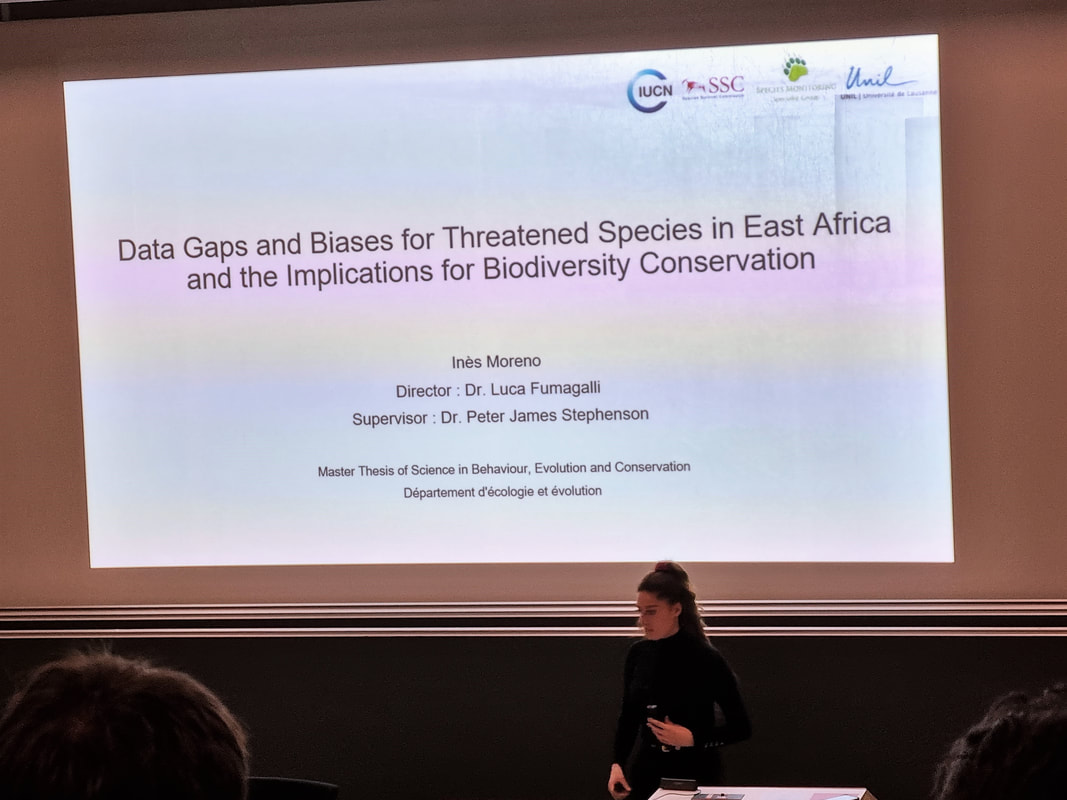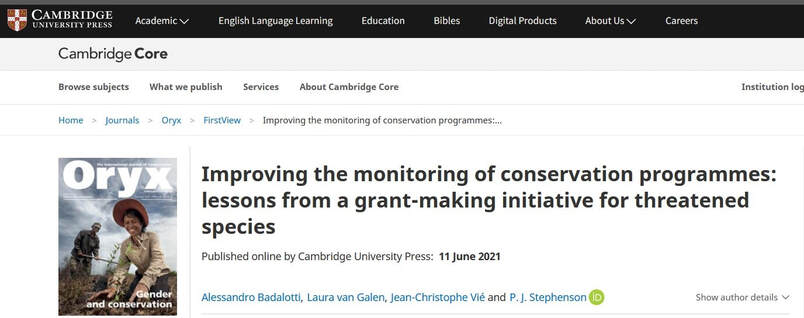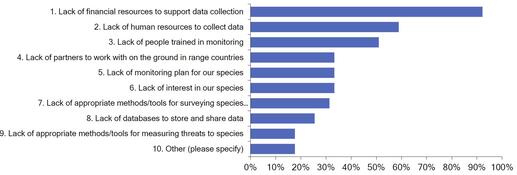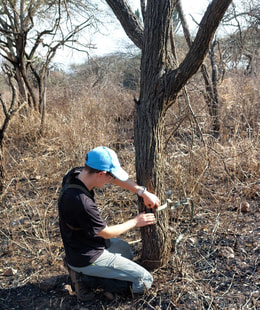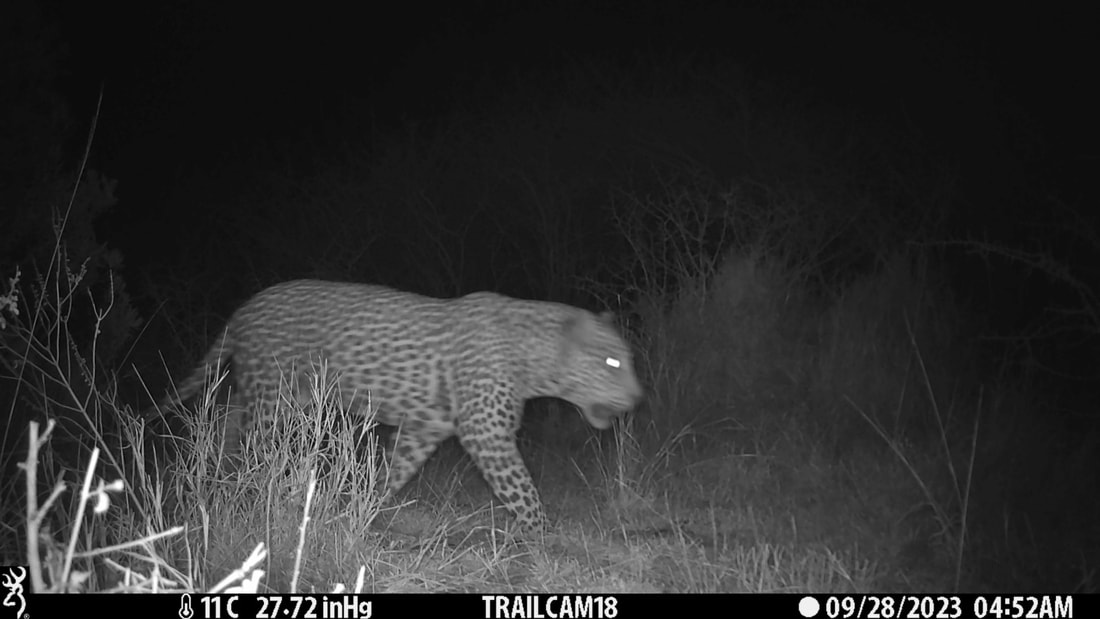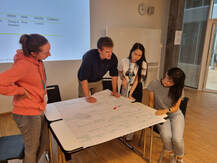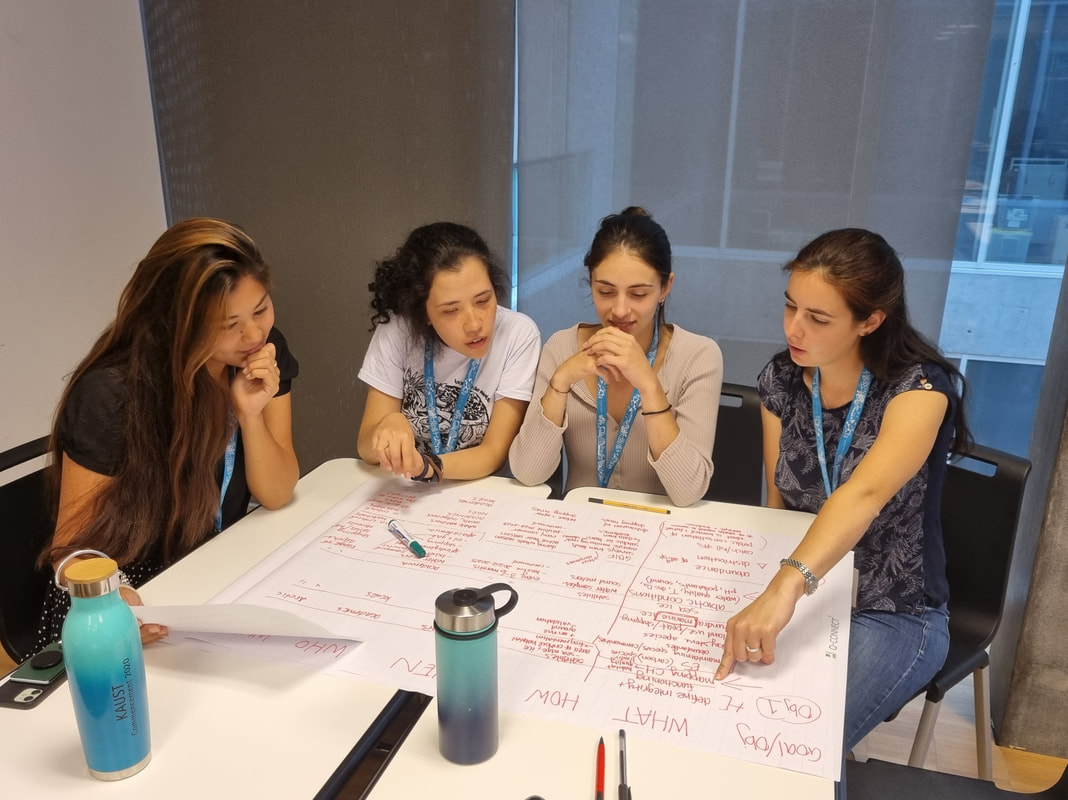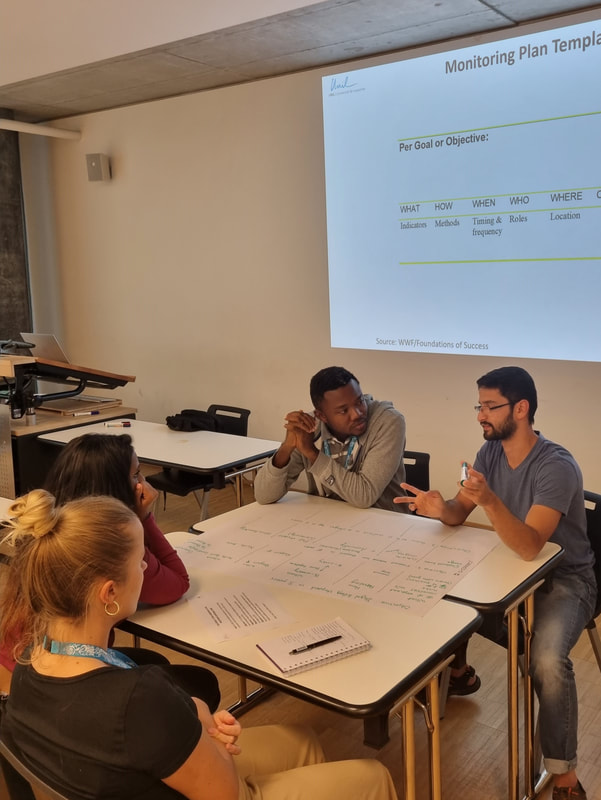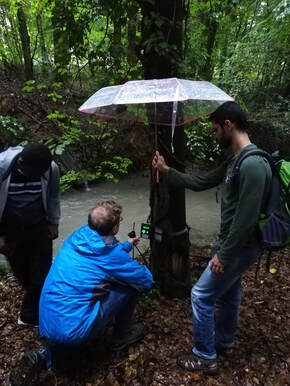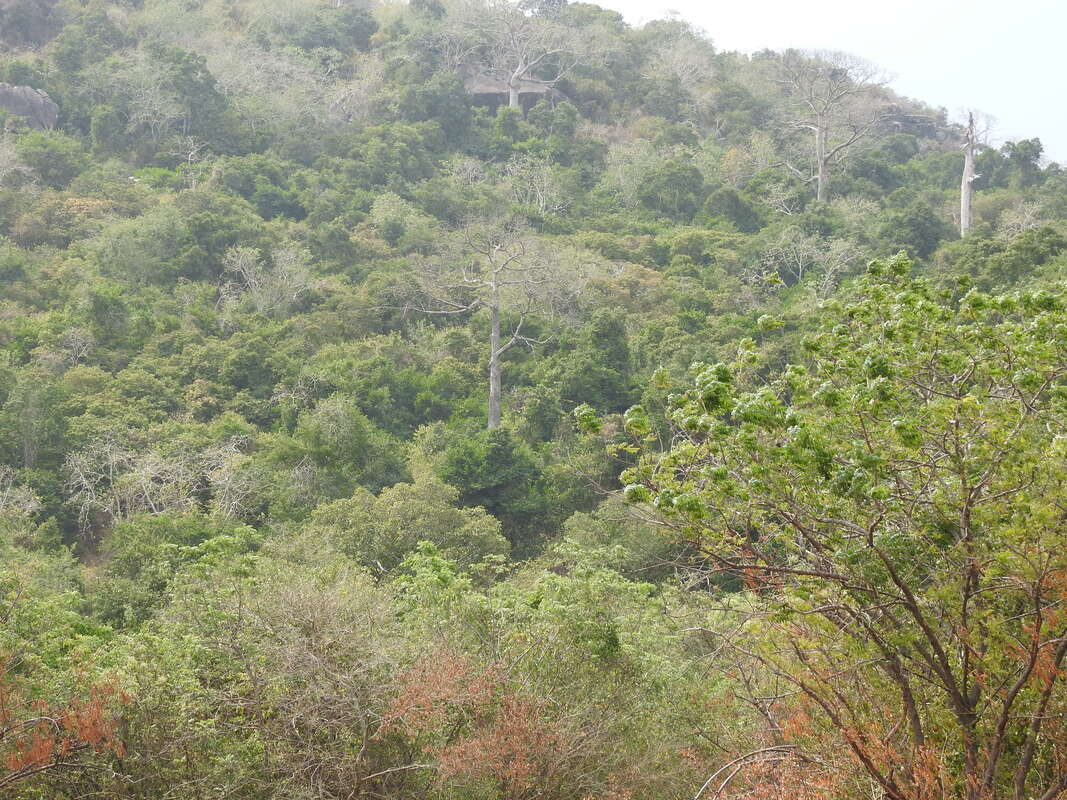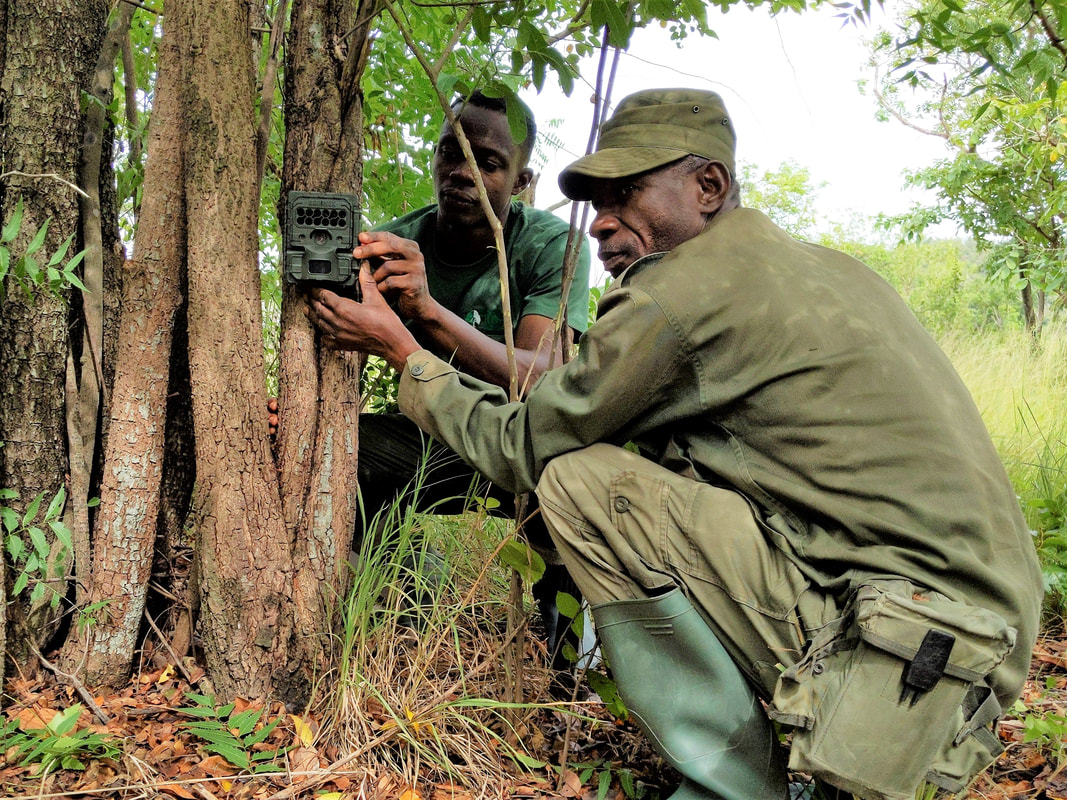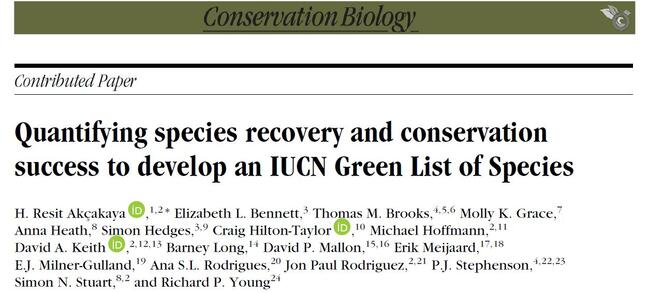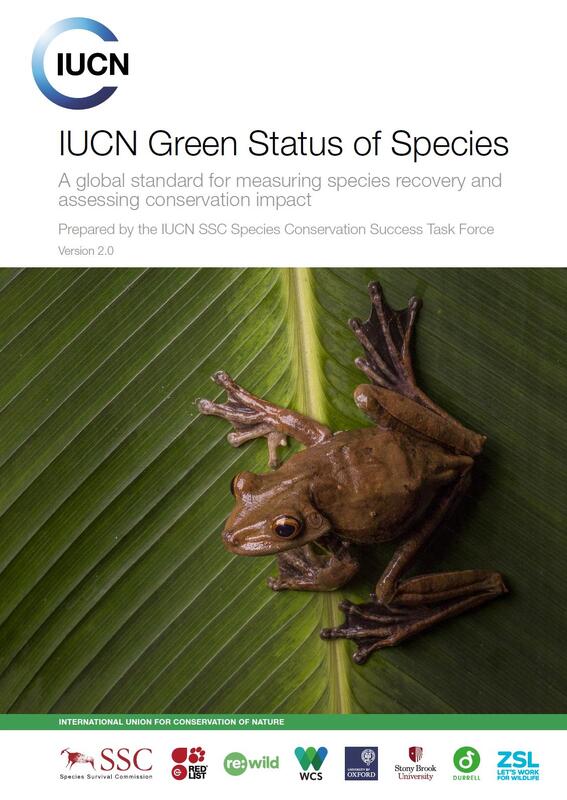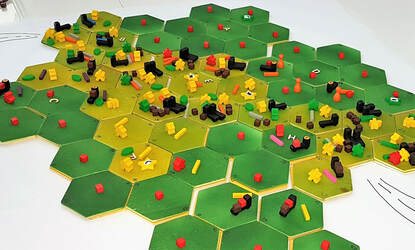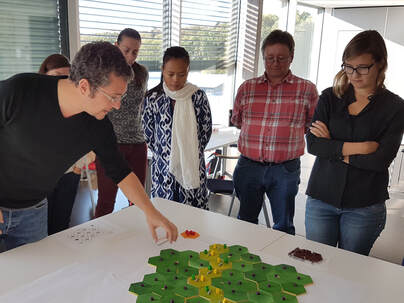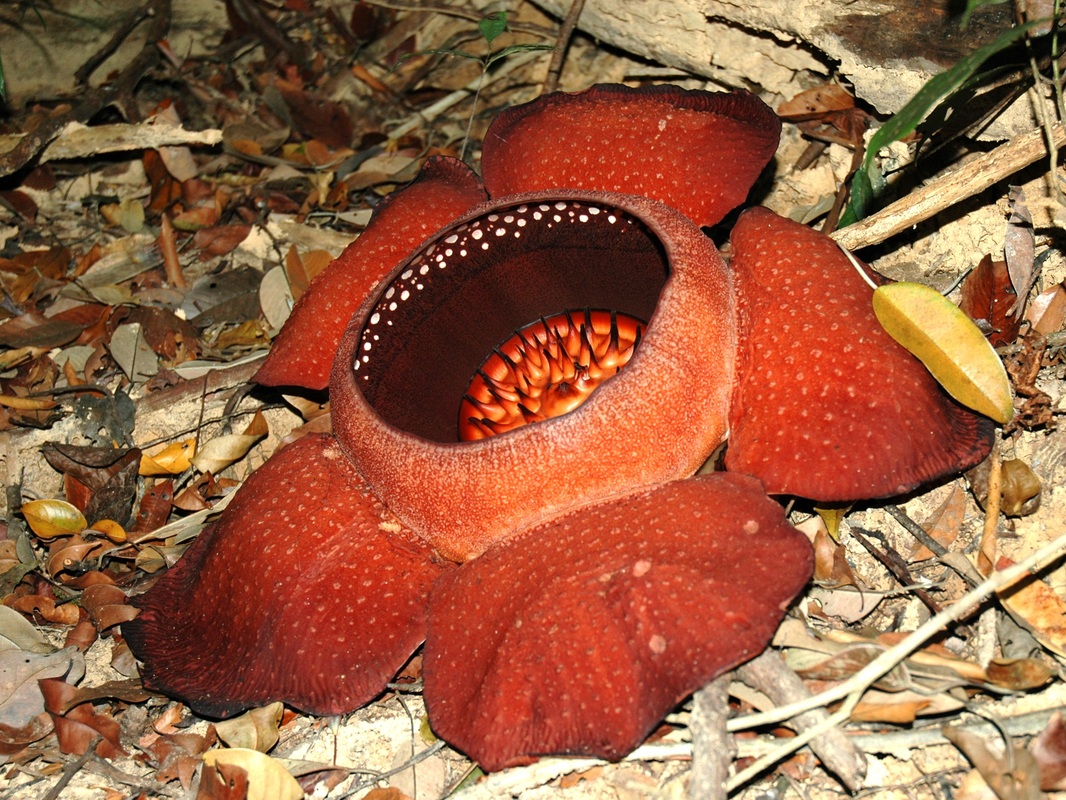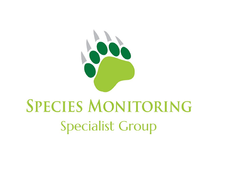The IUCN SSC Species Monitoring Specialist Group works with a range of partners to implement projects that deliver its mission. As of 4 January 2024, the group has established 13 projects under two programmes.
For the latest project news and updates, follow us on Twitter.
Summaries of the Group's work can be found here and in this contribution to the SSC's quarterly report for June 2021:
For the latest project news and updates, follow us on Twitter.
Summaries of the Group's work can be found here and in this contribution to the SSC's quarterly report for June 2021:
| stephenson_2021_iucn_ssc_quarterly_report_june2021_web.pdf | |
| File Size: | 1356 kb |
| File Type: | |
PROGRAMME 1: UNDERSTANDING GAPS IN DATA AND MONITORING CAPACITY
(Delivering Goup objectives 2 and 3).
(Delivering Goup objectives 2 and 3).
Unblocking the Flow of Biodiversity Data for Multi-Stakeholder Environmental Sustainability (2021-2023)
Aim: This multi-stakeholder collaborative project aims to bring together experts from conservation biology and business sustainability management to explore biodiversity data user needs across sectors and identify the reasons behind blockages to data flow and access. We will then use our research results to explore solutions and options for a user-friendly, open-access decision support tool to help stakeholders find the standards, guidelines, tools, methods and data they need. The project will enhance and complement global efforts by international organisations like IUCN and GEOBON to share and publicise data sources and to make existing tools and data freely available to the people who need them. This will ultimately help mainstream biodiversity data into decision-making and halt biodiversity loss.
Project goal: To assess the biodiversity data needs of international organizations, governments, civil society and business, to understand blockages to data flow and capacity development, and to produce a decision support tool to help enhance access to the methods and data necessary to facilitate monitoring and informed decision-making for conservation and sustainability.
Main partners: University of Lausanne, University of St Gallen, University of Ghana, Humboldt Biological Resources Research Institute.
Main donor: Swiss Network for International Studies - SNIS.
Project implementation lead: PJ Stephenson.
Group members involved: Maria Cecilia Londono, Yaa Ntiamoa-Baidu.
Latest updates
Aim: This multi-stakeholder collaborative project aims to bring together experts from conservation biology and business sustainability management to explore biodiversity data user needs across sectors and identify the reasons behind blockages to data flow and access. We will then use our research results to explore solutions and options for a user-friendly, open-access decision support tool to help stakeholders find the standards, guidelines, tools, methods and data they need. The project will enhance and complement global efforts by international organisations like IUCN and GEOBON to share and publicise data sources and to make existing tools and data freely available to the people who need them. This will ultimately help mainstream biodiversity data into decision-making and halt biodiversity loss.
Project goal: To assess the biodiversity data needs of international organizations, governments, civil society and business, to understand blockages to data flow and capacity development, and to produce a decision support tool to help enhance access to the methods and data necessary to facilitate monitoring and informed decision-making for conservation and sustainability.
Main partners: University of Lausanne, University of St Gallen, University of Ghana, Humboldt Biological Resources Research Institute.
Main donor: Swiss Network for International Studies - SNIS.
Project implementation lead: PJ Stephenson.
Group members involved: Maria Cecilia Londono, Yaa Ntiamoa-Baidu.
Latest updates
- The project started in November 2021.
- PJ announced the new project during his presentation to the Global Landscapes Forum Climate conference in Glasgow, 5 November 2021, and also during the specialist group's symposium at the 30th International Congress for Conservation Biology, Kigali, 15 December 2021.
- The first year focused on literature reviews and on recruiting post-doctoral researchers in each partner institution.
- The team then conducted in-depth analyses of data user needs and challenges in the three target countries through online surveys and stakeholder interviews.
- The project team is hosting a workshop in Lausanne in September 2023 to bring together a diversity of data users and enablers to discuss preliminary results and help identify solutions to identified data blockages.
- The project has so far generated 7 published papers and two updates to the Database of Global Data Sources for Biodiversity Conservation Monitoring.
- The final data analyses were completed in December 2023 as the project came to an end. These results will be submitted for publication in peer-reviewed journals in early 2024. A global webinar sharing project results will also be organised in 2024.
|
Data Gaps and Biases for Threatened Species in East Africa and the Implications for Biodiversity Conservation (2021-2022)
Aim: The aim of this research project is to conduct a case study in East Africa, a hotspot for biodiversity and for conservation projects, to answer the research question: What are the taxonomic and geographic gaps and biases in the biodiversity data available for threatened species and how are they affecting conservation action? The project will identify trends in data availability and place them in the context of recognised conservation priorities at national, regional and global levels. It will also gain an understanding of the root causes and consequences of data gaps through a survey of practitioners and policymakers and a literature review. The project will be conducted by Inès Moreno as part of her MSc. Project goal: By early 2022, recommendations are available to fill biodiversity data gaps in East Africa and enhance conservation. Main partners: Laboratory for Conservation Biology, Department of Ecology & Evolution, University of Lausanne. Main donor: UNIL studentship to Inès Moreno. Project implementation lead: Inès Moreno (UNIL). Group members involved: Inès Moreno, PJ Stephenson (project supervisor). Latest updates
|
© PJ Stephenson
Inès Moreno presenting the results of the project during her MSc defence at the University of Lausanne. |
A Global Audit of Biodiversity Monitoring (2017-2020)
Aim: To conduct a global audit of biodiversity monitoring to identify gaps that need filling in data and capacity worldwide. The project involves literature reviews, web searches, online surveys of stakeholders, and deep dives into selected countries and databases. Project outputs will include an open access database on species monitoring schemes, to connect data providers and decision makers.
Project goal: By end 2019, conservationists are aware of the priorities for filling gaps in data on species, their habitats and threats and for building the capacity necessary to monitor biodiversity.
Main partners: Birdlife International, IUCN, RSPB, UNEP-WCMC, University of Cambridge, Zoological Society of London.
Main donor: Cambridge Conservation Initiative Collaborative Fund.
Project implementation lead: Caroline Moussy (BirdLife International)
Group members involved: Ian Burfield, Richard Gregory, Louise McRae, PJ Stephenson.
Latest updates:
Identifying Data Gaps and Monitoring Challenges in Project Portfolio Reporting (2017-20)
Aim: To review project reports and databases for species conservation programmes to identify taxonomic and geographic trends in the availability of biodiversity data (especially relating to status and threats).
Project goal: By 2019, recommendations available to conservation donors on how to improve biodiversity monitoring in their portfolios.
Main partner: IUCN Save our Species (SOS) Programme.
Project implementation leads: Alessandro Badalotti, Laura van Galen, PJ Stephenson.
Group members and volunteers involved: Alessandro Badalotti, PJ Stephenson, Lauren van Galen.
Latest updates:
Aim: To conduct a global audit of biodiversity monitoring to identify gaps that need filling in data and capacity worldwide. The project involves literature reviews, web searches, online surveys of stakeholders, and deep dives into selected countries and databases. Project outputs will include an open access database on species monitoring schemes, to connect data providers and decision makers.
Project goal: By end 2019, conservationists are aware of the priorities for filling gaps in data on species, their habitats and threats and for building the capacity necessary to monitor biodiversity.
Main partners: Birdlife International, IUCN, RSPB, UNEP-WCMC, University of Cambridge, Zoological Society of London.
Main donor: Cambridge Conservation Initiative Collaborative Fund.
Project implementation lead: Caroline Moussy (BirdLife International)
Group members involved: Ian Burfield, Richard Gregory, Louise McRae, PJ Stephenson.
Latest updates:
- Project start-up meeting held in Cambridge with partners and collaborators in November 2017 to define project scope.
- Project assistant started work January 2018.
- Systematic search for monitoring schemes was conducted throughout 2018 in parallel to a web-based survey of key stakeholders. In depth assessments to identify national monitoring schemes were also conducted by partner agencies in 7 countries: Argentina, China, Colombia, Ghana, Indonesia, Kazakhstan and South Africa.
- Project partners met on 14 January 2019 to review the data collected and prepare the analyses which have now been completed.
- In July 2019 Louise McRae presented the results of the audit to the ICCB in Malaysia.
- A paper sharing the main results was published in Conservation Biology: Moussy, C., Burfield, I., Stephenson, P.J., Newton, A., Butchart, S.H.M., Sutherland, W., Gregory, R., McRae, L., Bubb, P., Roesler, I., Ursino, C., Wu, Y., Retief, E., Udin, J., Urazaliyev, R., Sanchez-Clavijo, L., Lartey, E. & Donald, P. 2021. A quantitative global review of species population monitoring. Conservation Biology. DOI: 10.1111/cobi.13721.
Identifying Data Gaps and Monitoring Challenges in Project Portfolio Reporting (2017-20)
Aim: To review project reports and databases for species conservation programmes to identify taxonomic and geographic trends in the availability of biodiversity data (especially relating to status and threats).
Project goal: By 2019, recommendations available to conservation donors on how to improve biodiversity monitoring in their portfolios.
Main partner: IUCN Save our Species (SOS) Programme.
Project implementation leads: Alessandro Badalotti, Laura van Galen, PJ Stephenson.
Group members and volunteers involved: Alessandro Badalotti, PJ Stephenson, Lauren van Galen.
Latest updates:
- SOS reports were reviewed and analyzed
- A paper sharing the results was published in June 2021: Badalotti, A., van Galen, L., Vié, J.-C., & Stephenson, P.J. 2021. Improving the monitoring of conservation programmes: lessons from a grant-making initiative for threatened species. Oryx. DOI: 10.1017/S0030605320000538
- We are looking for partners to repeat the exercise for other portfolios.
|
Taxonomic Data Bias – Assessing Expert Opinion (2017-18) Aim: To conduct a survey of the IUCN Species Survival Commission taxonomic specialist groups to seek expert opinion to identify taxonomic and geographic trends in the availability of species data (especially relating to Red List assessments). Project goal: By 2019, biodiversity data gaps hindering IUCN Red List assessments are mapped. Main partners: IUCN Species Survival Commission. Project implementation leads: PJ Stephenson, Laura van Galen. Group members involved: PJ Stephenson. Latest updates:
|
Main challenges faced by IUCN SSC specialist groups in collecting and accessing data for Red List assessments.
|
PROGRAMME 2: DEVELOPING TOOLS AND BUILDING CAPACITY
(Delivering Group objectives 2, 3, 4 and 5)
Reviewing and comparing biodiversity monitoring methods, tools and approaches (2018-2025)
Aim: To produce regular reviews that compare monitoring methods, tools and approaches and allow practitioners to make informed decisions.
Project goal: To publish at least one review per year on monitoring methods, tools and approaches.
Group members involved to date: PJ Stephenson, Maria Cecilia Londoño-Murcia, Paulo Borges, Louw Claassens, Heidi Frisch-Nwakanma, Nicholas Ling, Sapphire McMullan-Fisher, Jessica Meeuwig, Ian Burfield, Danilo do Carmo Vieira Correa, Gary Geller, Irina Montenegro Paredes, Leonard Mubalama, Yaa Ntiamoa-Baidu, Kini Roesler, Francsco Rovero, Yash Sharma, Nara Wisesa Wiwardhana, Jun Yang, Linda See, Arnaud Lyet, Serge Wich, Cristian Pérez-Granados, John Simaika.
Latest updates: Publications published so far that contribute to this project include
Aim: To produce regular reviews that compare monitoring methods, tools and approaches and allow practitioners to make informed decisions.
Project goal: To publish at least one review per year on monitoring methods, tools and approaches.
Group members involved to date: PJ Stephenson, Maria Cecilia Londoño-Murcia, Paulo Borges, Louw Claassens, Heidi Frisch-Nwakanma, Nicholas Ling, Sapphire McMullan-Fisher, Jessica Meeuwig, Ian Burfield, Danilo do Carmo Vieira Correa, Gary Geller, Irina Montenegro Paredes, Leonard Mubalama, Yaa Ntiamoa-Baidu, Kini Roesler, Francsco Rovero, Yash Sharma, Nara Wisesa Wiwardhana, Jun Yang, Linda See, Arnaud Lyet, Serge Wich, Cristian Pérez-Granados, John Simaika.
Latest updates: Publications published so far that contribute to this project include
- See, L., Lyet, A., Salvatori, M., Rovero, F., Pérez-Granados, C., Wich, S. & Stephenson, P.J. in press. Monitoring rangeland wildlife with the aid of remote sensing and other technologies: a review of the options. In O.P. Dube & J.I. Molefe (eds.), Remote Sensing of Rangelands - Monitoring the Anthropocene. CSIRO Publishing, Clayton, Australia.
- Stephenson, P.J., Londoño-Murcia, M.C., Borges, P.A.V., Claassens, L., Frisch-Nwakanma, H., Ling, N., McMullan-Fisher, S., Meeuwig, J.J., Unter, K.M.M., Walls, J.L., Burfield, I.J., Correa, D.C.V., Geller, G.N., Montenegro Paredes, I., Mubalama, L.K., Ntiamoa-Baidu, Y., Roesler, I., Rovero, F., Sharma, Y.P., Wisesa Wiwardhana, N., Yang, J. & Fumagalli, L. 2022. Measuring the impact of conservation: the growing importance of monitoring fauna, flora and funga. Diversity, 14(10): 824. DOI: 10.3390/d14100824
- Zwerts, J.A., Stephenson, P.J., Maisels, F., Rowcliffe, J.M., Astaras, C., Jansen, P.A., van der Waarde, J., Sterck, E.H.M., Verweij, P.A., Bruce, T., Brittain, S. & van Kuijk, M. 2021. Methods for wildlife monitoring in tropical forests: Comparing human observation, camera traps and passive acoustic sensors. Conservation Science & Practice, 3: e568. DOI: 10.1111/csp2.568
- Stephenson, P.J. 2020. Technological advances in biodiversity monitoring: applicability, opportunities and challenges. Current Opinion in Environmental Sustainability, 45: 36-41. DOI: 10.1016/j.cosust.2020.08.005
- Stephenson, P.J., Ntiamoa-Baidu, Y. & Simaika, J.P. 2020. The use of traditional and modern tools for monitoring wetlands biodiversity in Africa: challenges and opportunities. Frontiers in Environmental Science, 8: 61. DOI: 10.3389/fenvs.2020.00061
- Stephenson, P.J. 2019. Integrating remote sensing into wildlife monitoring for conservation. Environmental Conservation, 46: 181-183. DOI: 10.1017/S0376892919000092.
|
Comparing species monitoring methods: a case study in South Africa (2023-2024)
Aim: To compare the efficiency and cost-effectiveness of two methods commonly used to monitor large mammals: transect walks and camera trapping. The project is being conducted by Clara Fraschini as part of her MSc. Research questions: What are the relative advantages and disadvantages of using camera traps to monitor large mammal presence in a protected area compared with human transect observations? Which method is more cost effective (in terms of financial expenditure and labour time)? How do the findings in the study site compare for studies using the same techniques in other sites and habitats? Main partners: Laboratory for Conservation Biology, Department of Ecology & Evolution, University of Lausanne. Main donor: UNIL studentship to Clara Fraschini. Project implementation lead: Clara Fraschini (UNIL). Group members involved: PJ Stephenson (project supervisor). Latest updates
|
Clara Fraschini setting a camera trap in Mawana Game Reserve, KwaZulu Natal, South Africa.
A leopard caught on a camera trap in Mawana Game Reserve.
|
|
Improving capacity for protected area management in Ghana (2019-2024)
Aim: To enhance the conservation of forest, savanna and estuarine ecosystems in Ghana by improving capacity for evidence-based protected area management. We will develop and test species monitoring tools that meet local and global policy makers’ needs and train protected area managers and NGO staff, as well as developing university field courses for Ghanaian students. Project goal: By December 2024, multi-taxa monitoring systems using the latest tools and technology are tracking the status of, and threats to, biodiversity in at least four protected forest and wetland sites in Ghana, creating the enabling conditions for evidence-based management and enhanced conservation impact. Lead: Centre for Biodiversity Conservation Research (formerly Centre for African Wetlands), University of Ghana. Main partners: Wildlife Division of the Forestry Commission, local communities. Main donor: Audemars-Watkins Foundation. Project implementation lead: Kofi Amponsah-Mensah (CBCR). Group members involved: Yaa Ntiamoa-Baidu, Kofi Amponsah-Mensah, Francesco Rovero, Pedro Cardoso, PJ Stephenson. Latest updates:
Summer school participants developing a conservation project monitoring plan Photos © PJ Stephenson
Group chair, PJ Stephenson, training students in the use of camera traps. © J Fazy
Biodiversity Monitoring and Reporting Frameworks for Business (2017-2021)
Aim: Many businesses strive for a net positive impact on the environment, but are struggling to find ways to plan and monitor their efforts. This project started by developing a proposed monitoring and reporting framework for the energy company Enel. It then moved on to work with Alcoa, Boskalis and Nespresso to develop recommendations on biodiversity strategies for each company and use the lessons in developing generic IUCN Guidelines for Planning and Monitoring Corporate Biodiversity Performance. Project goal: By end 2021, at least three companies have biodiversity monitoring frameworks in place, providing data for environmental decision-making. Main partners: IUCN Global Business & Biodiversity Programme, Alcoa, Boskalis, Enel, Fauna & Flora International, Nespresso, University of Oxford. Main donors: Alcoa, Boskalis, Enel and Nespresso (to IUCN) Project implementation leads: PJ Stephenson, Giulia Carbone (IUCN) Group members involved: PJ Stephenson, Matt Walpole |
Forest in Shai Hills Resource Reserve. Photo © PJ Stephenson
Terns in Songor Lagoon. Photo © PJ Stephenson
Wildlife Division staff setting a camera trap in Shai Hills Reserve. Photo © Kofi Amponsah-Mensah
Building Capacity for Monitoring Among Young Conservation Professionals (From 2022)
Aim: To provide young conservation professionals with opportunities to learn about biodiversity monitoring and develop skills in data collection, analysis and use. Main partners: IUCN & University of Lausanne. Latest updates:
Related links:
© Jerome Duramy
Dr PJ Stephenson of the IUCN SSC Species Monitoring Specialist Group (right), working with Dr Guy Parker of Fauna & Flora International's business team, to assess biodiversity monitoring needs of an Enel power plant in Chile. |
Latest updates:
- In 2017, missions to Enel sites provided company-specific recommendations on improving planning, monitoring and reporting frameworks at site, national and corporate levels; these were presented to the company in 2018.
- In 2018, we also worked with project partners to explore a) how best to roll out and scale up the work to include other companies, and b) how to define key corporate biodiversity indicators. This included a partners workshop on 7 September hosted by Oxford University, UK. This led to a paper on biodiversity indicator development for business performance management (Addison et al., 2020).
- From 2019 to 2021, PJ Stephenson and Giulia Carbone of the IUCN Global Business & Biodiversity Programme worked with Nespresso and its partners to assess the company's current work relating to coffee certification and biodiversity. Missions to Brazil and Costa Rica in October and December 2019 respectively allowed us to visit farms and Nespresso partners. A report on recommended biodiversity goals and indicators for Nespresso was published in May 2021.
- Between 2019 and 2021 we worked with the mining company Alcoa and the marine services company Boskalis to assess the relevance of the guidelines for other sectors and to provide bespoke guidance on biodiversity planning and monitoring. Reports and recommendations were submitted to both companies.
- Taking account of lessons learned with Alcoa, Boskalis, Enel and Nespresso, draft IUCN Guidelines were released in August 2020 for public consultation. A revised version was then subjected to a formal IUCN peer review process in December 2020.
- The final version of the Guidelines was published on 15 March 2021: Stephenson, P.J. & Carbone, G. 2021. Guidelines for Planning and Monitoring Corporate Biodiversity Performance. IUCN, Gland, Switzerland. DOI: 10.2305/IUCN.CH.2021.05.en.
- The Guidelines were launched as part of the We Value Nature conference on 15 March 2021. Other communications on the publication include: Stephenson, P.J. & Carbone, G. 2021. New guidelines allow companies to plan and monitor biodiversity performance at the corporate level. Oryx, 55(4): 491-492.
- Background on IUCN and Nespresso partnership on IUCN website.
- News item on IUCN and Enel partnership on IUCN website.
.
Developing and Testing IUCN Green List Standards (2017-2021)
Aim: To enhance the value of IUCN "Green List" standards in monitoring biodiversity.
Project goal: By end 2021, the IUCN Green List of Protected and Conserved Areas and the IUCN Green Status of Species enhance biodiversity monitoring and the use of data for conservation planning and decision-making.
Main partners: IUCN Global Protected Areas Programme, IUCN Species Conservation Success Task Force, and many others.
Donors include: BIOPAMA, National Geographic Society, Wildlife Insights.
Project implementation lead: Molly Grace (Oxford University).
Group members involved: Molly Grace, Tom Brooks, Louw Claassens, Barney Long, Marc Hockings, PJ Stephenson, Richard Young, with advice and input from Ariadne Angulo, Ian Burfield and others.
Developing and Testing IUCN Green List Standards (2017-2021)
Aim: To enhance the value of IUCN "Green List" standards in monitoring biodiversity.
Project goal: By end 2021, the IUCN Green List of Protected and Conserved Areas and the IUCN Green Status of Species enhance biodiversity monitoring and the use of data for conservation planning and decision-making.
Main partners: IUCN Global Protected Areas Programme, IUCN Species Conservation Success Task Force, and many others.
Donors include: BIOPAMA, National Geographic Society, Wildlife Insights.
Project implementation lead: Molly Grace (Oxford University).
Group members involved: Molly Grace, Tom Brooks, Louw Claassens, Barney Long, Marc Hockings, PJ Stephenson, Richard Young, with advice and input from Ariadne Angulo, Ian Burfield and others.
Latest updates:
Green Status of Species
Green Status of Species
- Several Species Monitoring SG members were co-authors on a paper defining the IUCN Green List framework Quantifying species recovery and conservation success to develop an IUCN Green List of Species (Akçakaya et al 2018) and continue to participate in the IUCN Species Conservation Success Task Force as it develops the standard. A more recent paper involving the same authors explores how to assess indigenous species ranges, a key step in the Green Listing process (Stephenson et al., 2019).
|
An Inventory of Global Data Sources for Conservation Monitoring (2019-2022)
Aim: To identify and make publicly available a list of the main global databases of use in monitoring biodiversity.
Project goal: By December 2020, a database of global data sources of potential use in conservation monitoring is published and freely available, and updated regularly.
Main partner: Re:wild (formerly Global Wildlife Conservation).
Donors: Re:wild; Swiss Network for International Studies.
Project implementation lead: PJ Stephenson.
Group members and volunteers involved: PJ Stephenson, Carrie Stengel, Angela Ruiz de Paz.
Latest updates:
Aim: To identify and make publicly available a list of the main global databases of use in monitoring biodiversity.
Project goal: By December 2020, a database of global data sources of potential use in conservation monitoring is published and freely available, and updated regularly.
Main partner: Re:wild (formerly Global Wildlife Conservation).
Donors: Re:wild; Swiss Network for International Studies.
Project implementation lead: PJ Stephenson.
Group members and volunteers involved: PJ Stephenson, Carrie Stengel, Angela Ruiz de Paz.
Latest updates:
- PJ worked with Carrie Stengel at GWC (now Re:wild) to conduct an inventory of global data sources, which was then published in a peer-reviewed journal: Stephenson, P.J. & Stengel, C. 2020. An inventory of biodiversity data sources for conservation monitoring. PLoS ONE, 15(12): e0242923.
- The database was published on the Group's website on the Data Sources page where it will be maintained and regularly updated.
- Version 2.0 was launched in January 2022.
|
© PJ Stephenson
The role-playing game, MineSet, developed by researchers at ETH Zürich to facilitate stakeholder dialogue on natural resource management issues. © PJ Stephenson
MineSet was tested with IUCN teams in 2018. A project to field test the tool in the Western Indian Ocean is under development. |
Testing a New Tool to Facilitate Stakeholder Conversations (2018-2020)
Aim: For any environmental management and monitoring systems to work, stakeholders need to be implicated from the outset. The Forest and Development Group at ETH Zürich has developed a method to enhance the mutual understanding of key environmental issues. The method, called MineSet, uses role-playing to facilitate open discussions and develop consensus among diverse stakeholders. We facilitated a one-day workshop at IUCN HQ in September 2018 to test this method and evaluate its relevance and any adaptations needed before we apply it to protected areas. We are now exploring options for piloting the method in field sites. Project goal: By end 2020, enhanced stakeholder engagement ensures improved biodiversity management and monitoring in and around protected areas in at least three countries. Main partners: ETH Zürich (ForDev), IUCN Science & Economic Knowledge Unit, IUCN global programmes. Project implementation lead: Claude Garica (ETH Zürich) Group members involved: PJ Stephenson, Tom Brooks Latest update:
|
Key outputs 2018-2023
- We published several scientific papers and presented many of them at conferences to disseminate our findings and project results and to raise awareness of the issues tackled by the Group. As well as the publications mentioned above, papers produced by group members included:
- The Chair supported the IUCN Global Business and Biodiversity Programme in providing recommendations to the International Olympic Commission on ecological monitoring for the Beijing 2022 Olympic Winter Games.
© PJ Stephenson
